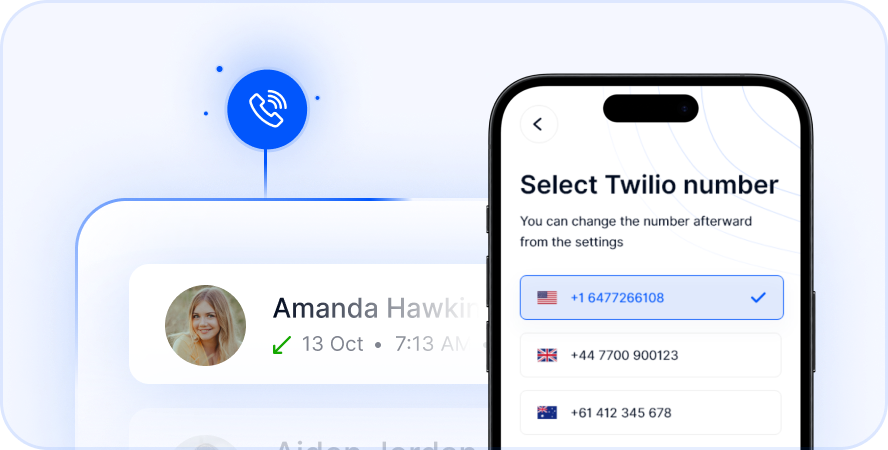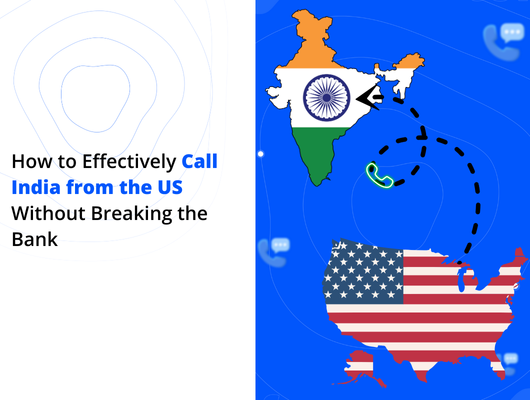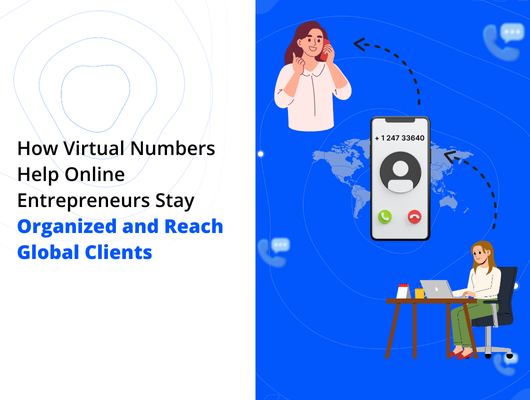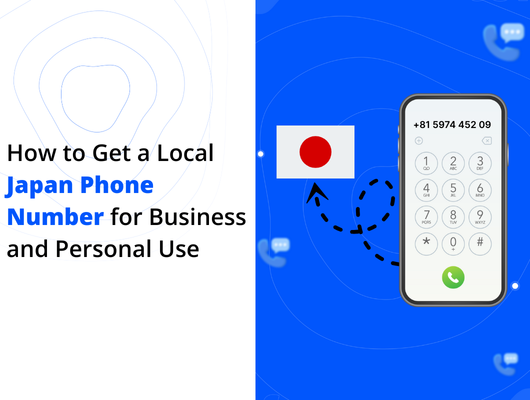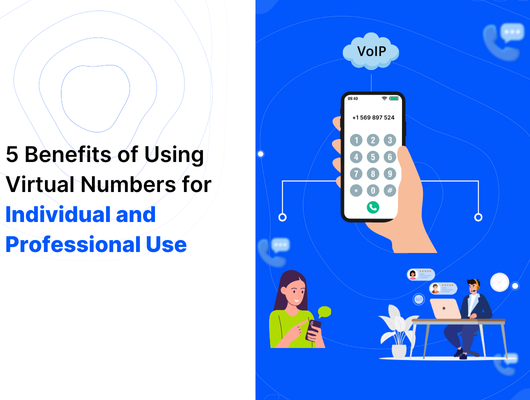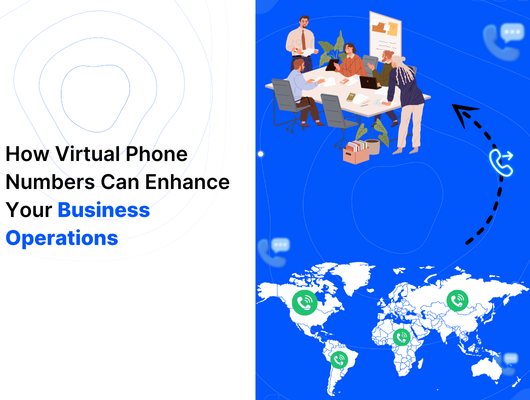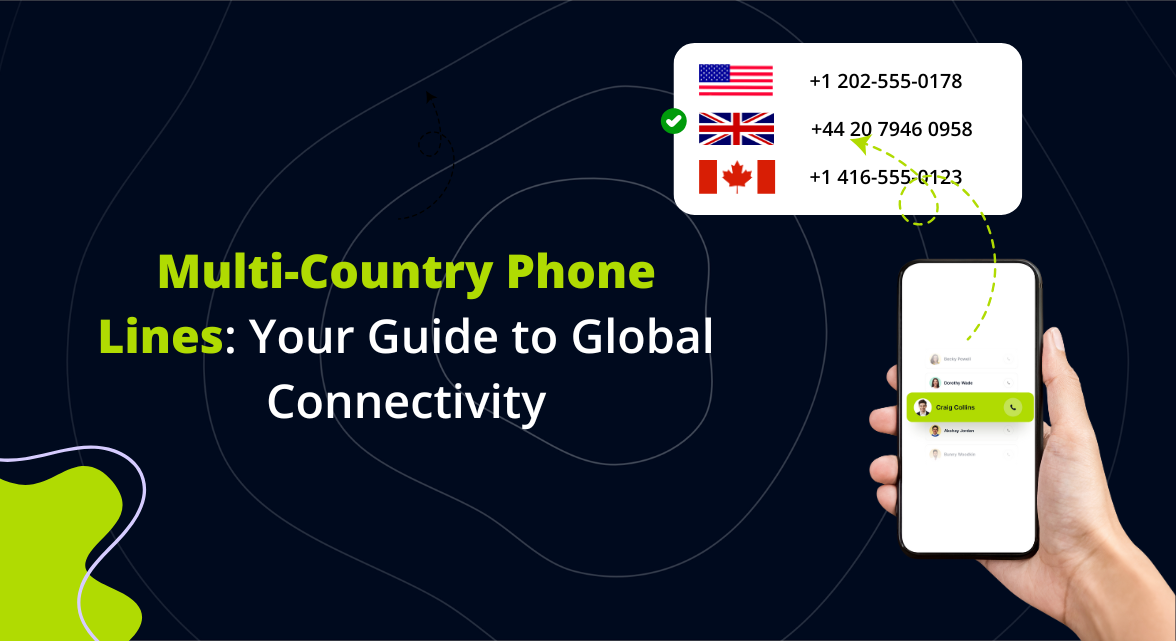
Communication is essential for success in today’s connected world. If you work across borders, manage remote teams, or have family abroad, staying in touch easily is a top priority. Traditional phone systems often make international communication difficult and expensive. They can limit who you can reach and how you scale your efforts globally.
Multi-country phone lines offer a modern solution. They use virtual phone numbers and cloud technology to help you connect worldwide without high costs or complex setups. This guide will explore how multi-country phone lines work, who benefits most, and how to use them effectively to improve your global reach. For a deeper look at how global communication is changing, check out this resource on the evolution of business communication trends.
What Exactly Are Multi-Country Phone Lines?
Multi-country phone lines are a flexible way to manage phone communication across different countries. They rely on internet-based technology instead of physical phone lines. This allows you to have local phone numbers in various locations, all managed from one central system.
The Core Concept: Virtual Numbers
At the heart of multi-country phone lines are virtual phone numbers. These are phone numbers not tied to a specific physical phone line, SIM card, or location. You can choose a virtual number from almost any country you need.
This means someone in London can call a number that looks local to them, even if you are actually based in New York or anywhere else. The call routes over the internet to your device. Virtual numbers offer great flexibility and can route calls to your mobile, desktop, or any internet-connected device.
How Cloud Telephony Makes it Possible
Cloud telephony is the technology that powers virtual phone numbers and multi-country systems. It moves your phone system infrastructure to the internet, or “the cloud.” This removes the need for bulky, expensive hardware in your office.
With cloud telephony, you can manage your entire phone system online. You can easily add or remove phone lines from different countries as needed. This makes the system highly scalable and accessible from anywhere with an internet connection.
Key Benefits of Global Connectivity
Using multi-country phone lines provides significant advantages for individuals and businesses operating globally. These benefits go beyond just making and receiving calls.
Here are some key advantages:
Access Advanced Features: Benefit from features like call forwarding, voicemail-to-text, call recording, and analytics tools that enhance communication efficiency.
Establish a Local Presence: Offering a local number in a country builds trust with customers and partners there. It makes your business feel accessible and nearby.
Reduce Costs: International calls and roaming charges can be very expensive with traditional phones. Cloud-based multi-country lines use VoIP (Voice over Internet Protocol), which transmits calls over the internet, dramatically lowering costs.
Increase Flexibility and Mobility: You can manage your numbers and take calls from any device with an internet connection. This supports remote work and travel.
Improve Privacy: Use a virtual number for business or public contact instead of giving out your personal phone number.
Enhance Scalability: Easily add more numbers or lines in different countries as your needs grow or change.
Who Needs Global Connectivity?
Multi-country phone lines are not just for large corporations. Many different types of users can benefit from their capabilities. They provide tailored solutions for specific global communication challenges.
Let’s look at who can gain the most:
Businesses Expanding Overseas
When a company enters a new international market, building credibility is vital. A local phone number makes potential customers in that country comfortable calling you. It shows you are serious about serving their market. This can significantly increase customer inquiries and sales.
Using local numbers also simplifies communication with suppliers, partners, and employees in different regions. It creates a unified communication structure.
Remote Workers and Freelancers
Remote professionals often work with clients or teams located in various countries. A virtual number allows you to have a professional number that matches your clients’ location. This helps maintain a professional image, even if you work from a home office anywhere in the world.
It also helps separate work calls from personal calls. You can manage all your professional communication through dedicated virtual numbers.
International Customer Support Teams
Providing excellent customer support across borders can be challenging. Offering local support numbers removes the barrier of international dialing codes and high call costs for your customers. This makes it easier for them to reach you when they need help.
Improved accessibility leads to higher customer satisfaction and loyalty. Support teams can handle inquiries more efficiently with advanced routing features.
Frequent Travelers and Individuals with Global Ties
Travelers can avoid massive roaming bills by using a multi-country phone line. You can stay connected using Wi-Fi or local data without changing your SIM card or incurring unexpected costs.
Individuals with family or friends living abroad can also benefit greatly. It makes calling loved ones in other countries much more affordable and convenient than traditional international calling plans.
Setting Up Your Global Phone System
Getting started with multi-country phone lines is a straightforward process with modern cloud telephony providers. You don’t need technical expertise or special hardware.
Here is a simple guide to setting up your system:
- Choose Your Provider: Research and select a cloud telephony service. Look for one that supports the countries you need and offers reliable service.
- Select Your Numbers: Purchase virtual phone numbers for the countries where you want a local presence. The provider’s platform will guide you through available numbers.
- Configure Settings: Set up how incoming calls should be handled for each number. You can route calls to specific devices, team members, or voicemail. Configure features like call forwarding and business hours.
- Integrate Devices: Connect the service to your preferred devices. This might involve installing a mobile app, desktop softphone, or configuring a VoIP desk phone.
- Test Everything: Make test calls to and from your new virtual numbers. Check that calls route correctly, voicemail works, and call quality is good. Ensure all features you configured are functioning as expected.
Choosing the Right Provider
Selecting the right provider is crucial for a smooth experience. Different providers offer varying features, pricing, and country coverage.
Consider these factors when making your choice:
- Country Coverage: Does the provider offer numbers in all the countries you need now and might need in the future?
- Features: Do they provide essential tools like call forwarding, voicemail, SMS, and advanced features like voicemail-to-text or analytics?
- Pricing: Compare monthly costs, per-minute rates, and any setup fees. Many offer pay-as-you-go or flexible plans.
- Reliability and Call Quality: Look for providers known for stable connections and clear call quality, which depends on their infrastructure.
- Ease of Use: Is their online platform or app easy to navigate for managing your numbers and settings?
- Customer Support: What kind of support do they offer if you run into issues?
- Integration Options: Can the service integrate with other tools you use, like CRM systems or messaging apps? Platforms like Telfon, for example, offer multi-country number support, integration with WhatsApp, and advanced features like SMS broadcasting.
Understanding International Number Formats
Using the correct format when dialing international numbers is essential for calls to connect successfully. Each country has its own structure.
The standard format includes the country code, area code, and the local subscriber number. You usually drop the leading “0” from the area code when dialing from outside the country.
Here are examples:
- United Kingdom (UK) Format: Start with the country code
+44. Then add the area code (without the leading 0). Finally, add the local number. Example:+44 20 1234 5678(for a London number). - Germany Format: Start with the country code
+49. Add the area code (without the leading 0). Add the local number. Example:+49 30 1234 5678(for a Berlin number). - United States (US) Format: Start with the country code
+1. Add the 3-digit area code. Add the 7-digit local number. Example:+1 212 555 1212(for a New York City number).
Always use the international dialing format (+ followed by the country code) when calling into a country, even if you are calling from another virtual number within that same country but on a different account or platform.
Maximizing Value: Best Practices
Simply having multi-country phone lines is the first step. Implementing smart practices helps you get the most out of your global communication system.
Here are some tips for effective management:
Managing Across Time Zones
Communicating across different time zones requires careful planning. Be aware of the local time for the person you are calling or who is calling you.
Use scheduling tools or features within your phone system to set business hours for specific numbers. This helps avoid calls coming in at inconvenient times and ensures you only route calls when you are available.
Using Call Forwarding Smartly
Call forwarding is a powerful tool in a multi-country setup. You can forward calls based on time of day, caller ID, or availability.
For instance, calls to your German number during German business hours could go to your sales team. After hours, they might forward to voicemail or a support line in a different time zone. You can also forward calls to your mobile phone when you are out of the office.
Data and Analytics
Many cloud telephony platforms provide call analytics. This data can offer valuable insights into your communication patterns.
Track call volume, duration, origin, and destination. Identify peak call times, see which numbers receive the most calls, and monitor team performance. Analyzing this data helps you optimize staffing, improve marketing efforts, and understand where your international communication is most active.
Ensuring Call Quality
Clear communication requires good call quality. While VoIP technology is generally reliable, call quality depends heavily on your internet connection.
Ensure you have a stable, high-speed internet connection at your location. Use reliable headsets or microphones, especially for business calls, to minimize background noise and ensure your voice is clear.
Leveraging Advanced Features
Take advantage of the additional features offered by your provider. Voicemail-to-text transcription saves you time by letting you read messages instead of listening. SMS capabilities allow you to send and receive texts using your virtual numbers, which is popular in many countries. Features like call recording can be useful for training or compliance purposes.
Saving Money on International Communication
One of the biggest benefits of multi-country phone lines is the cost savings compared to traditional methods. Understanding how they save you money helps you budget effectively.
Here are key ways these systems cut costs:
Why Virtual Numbers Beat Roaming
Roaming charges are notoriously high. When you use a local SIM card abroad or your home SIM with roaming enabled, you pay premium rates for calls, texts, and data.
Virtual numbers use your existing internet connection. You pay standard VoIP rates or use your plan’s minutes, which are significantly cheaper than roaming fees. You can make calls that appear local to the recipient without incurring international charges on your end.
VoIP vs. Traditional Lines
Traditional phone systems use physical infrastructure, and international calls involve charges from multiple carriers. VoIP sends voice data over the internet, which is much more cost-effective, especially for long distances.
Many providers offer pay-as-you-go rates that are very low per minute for international calls. Subscription plans often include bundles of minutes that further reduce the per-call cost.
Budgeting and Tracking Usage
Cloud platforms make it easy to monitor your call usage and spending in real-time. You can track costs per number, per user, or per country.
This visibility allows you to set budgets, identify areas where costs are high, and adjust your plan or communication strategy accordingly. Some systems allow you to assign budgets to individual users to manage team spending.
Frequently Asked Questions
Here are answers to some common questions about multi-country phone lines:
Q1: Are multi-country phone lines expensive?
A: Compared to traditional international calls or roaming, multi-country phone lines are generally much more affordable. Costs typically involve a low monthly fee per number and competitive per-minute rates for calls.
Q2: How quickly can I get a virtual number?
A: With most cloud telephony providers, you can purchase and activate a virtual number in a new country within minutes, as long as you provide any necessary documentation (like proof of address for certain countries).
Q3: Do I need special equipment to use these numbers?
A: No, you usually don’t need special hardware. You can use a smartphone app, a desktop computer with a softphone application, or a standard VoIP desk phone. You just need a reliable internet connection.
Q4: Can I use my existing phone with a virtual number?
A: Yes, most providers offer mobile apps that turn your existing smartphone into a device capable of making and receiving calls using your virtual numbers. You can make and receive calls over Wi-Fi or your mobile data connection.
Simplify Your Global Communication
Managing communication across different countries does not have to be complicated or expensive. By using virtual phone numbers and leveraging the power of cloud telephony, you can establish a global presence with ease.
These modern tools offer cost savings, flexibility, and advanced features that traditional systems cannot match. Implementing simple best practices and choosing a reliable provider allows you to streamline your international communication and connect with anyone, anywhere in the world, effectively and affordably.advanced features, you can transform your communication strategy to meet global demands.



